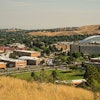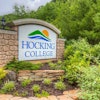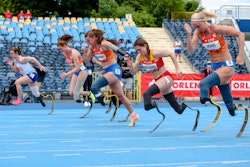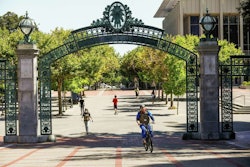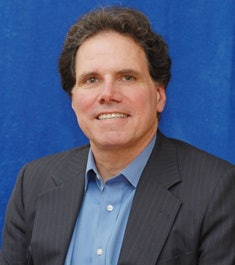 Michael Calabrese, an AIR.U co-founder and director of the Wireless Future Project, says that little effort has gone into bringing broadband to rural communities.
Michael Calabrese, an AIR.U co-founder and director of the Wireless Future Project, says that little effort has gone into bringing broadband to rural communities.Along West Virginia University’s Personal Rapid Transit tramway system in Morgantown last summer, the university deployed “Super Wi-Fi” public Internet service at each of the system’s five stations, allowing students and staff to access the Internet with mobile devices from the tram station platforms. While there are more installations of this next-generation wireless technology planned this year for the campus and parts of Morgantown, officials declared this pilot of “TV white space” technology for broadband connectivity to be successful.
To address the challenge of establishing universally available and affordable broadband in the U.S., a diverse coalition of college and university consortiums, corporate giants such as Microsoft and Google and other organizations are seeking to deploy new technology that will boost wireless broadband connectivity in small towns and rural areas. Founded in 2012, the AIR.U (Advanced Internet Regions) project consists of higher education association members such as the United Negro College Fund (UNCF), the Corporation for Education Network Initiatives in California (CENIC), the Gig.U research university consortium and the New England Board of Higher Education (NEBHE). In total, more than 500 colleges and universities are represented by the AIR.U consortium members.
“The idea is to really extend … this new technology of unlicensed access to vacant TV channels, which the FCC [has] been calling Super Wi-Fi, [and] to leverage Super Wi-Fi technologies to benefit rural colleges and their surrounding communities,” says Michael Calabrese, an AIR.U co-founder and director of the Wireless Future Project at the New America Foundation’s Open Technology Institute.
Calabrese notes that while U.S. colleges and universities are benefiting greatly from the availability of high-speed broadband connectivity, little effort has gone into bringing broadband to rural communities. This realization led to the founding of AIR.U.
“We thought that the colleges, precisely the ones that would not qualify for Gig.U, could benefit from TV white space because opening unlicensed access to the vacant TV channels is much more plentiful in the small towns and rural communities since there are fewer TV stations there,” Calabrese explains.
For colleges and universities, a significant opportunity exists in having unlicensed access to unused television channels, or TV white space spectrum. Schools can enhance their high-speed wireless connectivity and extend it to nearby communities. TV white space technology promises to open up broadband to communities that previously have been poorly served, or not served at all, by traditional broadband providers, such as telephone and cable television companies, officials say.
It’s well documented that there is a digital divide within U.S. states and regions along geographic lines. On one side, 71 percent of the U.S. rural lived in areas that had access to basic wireline broadband service, defined as combined advertised speeds of at least 3 Mbps downstream and 768 kbps upstream, while 98 percent of the urban population had basic wireline broadband service available, according to a 2013 report by the U.S. Department of Commerce. In addition, the gaps were significant between the proportion of urban and rural residents who had moderate- to high-speed wireless broadband service available. Only 15 percent of rural residents had wireless download speeds of 10 Mbps or greater available, compared to 70 percent of urban residents.
Bob Nichols, the CEO of Declaration Networks Group, LLC and an AIR.U co-founder, says the AIR.U initiative is moving forward with its recently announced “Quick Start Network Program,” which builds on the West Virginia University pilot. The new program includes “the development of a coordinated user group for AIR.U Quick Start participants to further develop the White Space technology, establish best practices, identify applications and share approaches for community expansion activities,” according to Declaration Networks Group, a member of the AIR.U consortium.
“The ecosystem supporting [TV white space] technology is just now in production,” Nicholas says. “So just over the past month, we have implemented the first [TV white space equipment] production units to support commercial capabilities for this new technology.”
HBCUs in the mix
Robert Rucker, vice president for operations and technology for the UNCF, says the organization has been working with six South Carolina HBCUs to deploy TV white space technology. Last year, representatives from Allen University, Morris College, Claflin University, South Carolina State University, Voorhees College and Benedict College met with UNCF and AIR.U officials at the Benedict campus in Columbia and participated in a UNCF-coordinated workshop on TV white space broadband development.
“We have a concentration of schools in the South Carolina area,” says Rucker, adding that they are working together as a mini-consortium to develop a TV white space program.
Although there is not yet a definitive timetable as to when the campuses will deploy the technology, Rucker notes that the schools want to operate a Super Wi-Fi network that allows them each to provide high-speed Internet to remote and non-contiguous parts of their campuses under a single network set-up rather than having to purchase broadband service from outside vendors.
“Immediate opportunities are connecting off-site dorms … or any [off-site] facility that might be associated with the school,” says Rucker. “We’ve been on a steady path and I think the potential is just huge.”
Joey Brenn, assistant vice president for information technology services at Claflin University, says school officials would like to have TV white space technology extend the campus computer network to a collection of campus-owned houses separated from the main campus by a highway and railroad tracks.
“By using [the TV white space equipment], we’d be able to transmit to each house even though they’re peppered throughout the community,” he explains.
Brenn envisions that the Super Wi-Fi system would be anchored by a base antenna that sits atop a Claflin high-rise building. The technical design of a TV white space network enables wireless broadband systems to potentially transmit several miles out from an installed antenna base. At coverage area locations in a TV white space network, the Super Wi-Fi transmission is typically converted into conventional Wi-Fi signals, which ordinary computers and mobile devices can access, Brenn explains.

